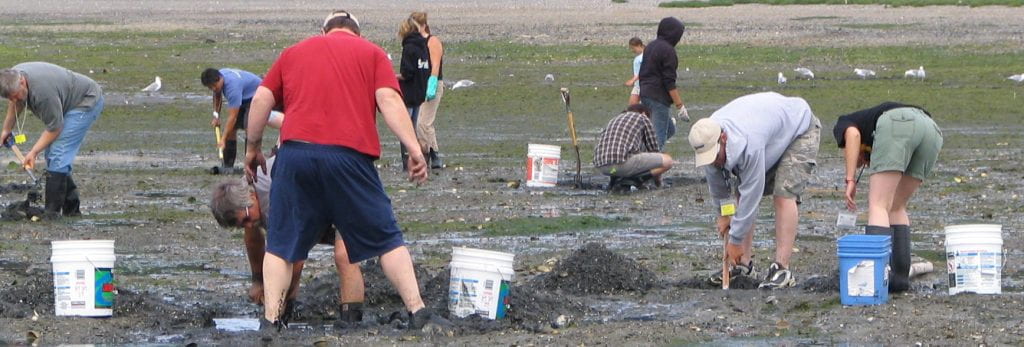Nutrients and Seaweed Blooms
Although many factors contribute to the formation of algal blooms, anthropogenic inputs of nutrients, particularly nitrogen from fertilizers and human and animal sewage, are often responsible for fueling rapid algal growth rates that lead to the formation of blooms. In the Salish Sea, background levels of nitrogen are relatively high due to the regular occurrence of upwelling. It is been hypothesized that these high background levels of nutrients may make the area particularly vulnerable to seaweed blooms because little anthropogenic input of nitrogen is needed in order to cause seawater nitrogen concentrations to exceed a “tipping point” in which nitrogen is no longer a limiting nutrient to algal growth. Using measurements of seawater nutrient levels, algal tissue nitrogen and phosphorus concentrations, and measurements of stable nitrogen isotopes, we have determined that the primary nitrogen source for local blooms at our study site Penn Cove is upwelled waters. However, during periods of rapid algal growth when nitrogen becomes limiting, anthropogenic inputs from wastewater facilities can be important in sustaining high rates of algal growth. We have also determined experimentally that human activities that disturb nutrient-rich sediments can enhance the growth of bloom-forming green seaweeds.

Seaweeds and Sulfur Cycling
Many species of marine algae produce the sulfur compounds dimethylsulfoniopropionate (DMSP) and dimethyl sulfide (DMS). These sulfur compounds have been described as “molecules of keystone significance” because they occur in relatively small quantities relative to other bioactive molecules, but they can have large effects. DMS and DMSP in algae are responsible for altering trophic interactions, protecting algae from oxidative stress, and helping them acclimate to changes in salinity. DMS is a small volatile compound that is formed from sulfur taken up from the oceans. When released from algae, it crosses the sea-air boundary and enters the atmosphere. Oxidized DMS is responsible for forming condensation nuclei (CCN), which may lead to the formation of clouds and alter the Earth’s albedo. It has been estimated that biogenic DMS is responsible for 90% of the transfer of sulfur from the oceans to the atmosphere. Our research has found that common species of green seaweeds increase release rates of DMS in response to environmental stresses. Even when these seaweeds are not stressed, release rates of DMS are relatively high on a per meter squared basis. We estimated that the relatively moderate blooms of ulvoid algae found in the Salish Sea region release 1-65 µmol of sulfur per square meter per day when they are not stressed. These amounts can exceed those released by other types of marine organisms, such as salt marsh plants and reef-forming corals. Release rates of DMS will undoubtedly be higher in more extensive blooms or when the seaweeds are experiencing stresses such as desiccation. While the release of sulfur by seaweed blooms is unlikely to be large enough to have global impacts on climate, there may be times when the sulfur releases affect cloud formation on localized scales.
